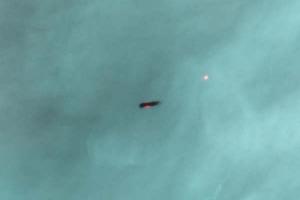Post
When Worlds Collide
19 November 2012
 NASA/Hubble
NASA/HubbleAbove is an image of a protoplanetary disk in the Orion nebula, taken from the Hubble telescope. The interesting thing about this particular image is that it’s edge on, and it’s silhouetted against the nebula itself. This means we have a good view to the dust and rock of the disk. This means we can actually observe the dust beginning to coalesce into larger bodies, which should eventually lead to planets.
The discovery of protoplanetary disks such as this one agree with the nebular hypothesis, which posits that a star and planetary system form together. The star collapses out of a nebula, and forms an accretion disk around itself, out of which the planets form.
While an image such as this is useful in observing the early stages of planetary formation, the very conditions that make it easy for us to observe also make it more difficult for planets to form. The Orion nebula is dominated by four very bright stars known as the Trapezium cluster. Because the surrounding nebula is brightly illuminated by these stars, the protoplanetary disk is easy to observe. But this means the disk itself is also being irradiated by the cluster, so much of the gas and dust of the disk may be driven away from the star before planets have a chance to form. It may be the case that some Jupiter-size planets can form quickly before too much gas and dust is driven away, but it isn’t likely that a solar system like ours will form in this case.